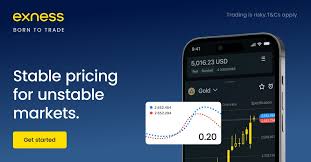
Understanding Exness Server Ping Latency: Its Impact on Trading
For traders, especially those engaged in high-frequency trading, the performance of trading platforms is paramount. One crucial aspect affecting performance is server latency. In this article, we will delve into the concept of Exness server ping latency and how it affects traders on the platform. Additionally, we’ll explore methods to improve latency and provide insights on ensuring a more efficient trading experience. For additional resources and tools, check out exness server ping latency trading-jo.com.
What is Server Ping Latency?
Server ping latency refers to the time it takes for a data packet to travel from your device to the server and back. This is critical for online trading, where milliseconds can make a difference between profit and loss. The ping is measured in milliseconds (ms), and a lower ping indicates a faster response time from the server.
Why is Ping Latency Important for Exness Traders?
In the world of online trading, especially on platforms like Exness, latency plays a vital role for several reasons:
- Order Execution: Lower latency ensures that buy or sell orders are executed quickly. In volatile markets, even a few milliseconds can mean the difference between getting the desired price and missing out.
- Price Updates: Accurate and timely price updates are essential for making informed trading decisions. High latency can result in outdated price information, leading to poor trade executions.
- Scalping Strategies: Traders who use scalping strategies rely heavily on fast execution. High ping can compromise the profitability of such tactics.
- Overall Trading Experience: A seamless trading experience with minimal delays fosters confidence in the platform and enhances the ability to react swiftly to market changes.
Factors Affecting Server Ping Latency
Several factors contribute to server ping latency, including:
1. Geographic Distance
The physical location of the server relative to the trader’s location can significantly affect latency. The further away the server, the higher the latency due to the increased distance the data must travel. Exness has multiple servers located across different regions, which can help mitigate this issue.
2. Internet Connection Quality
The quality of your internet connection plays a critical role in determining ping latency. A poor connection or overcrowded networks can increase latency levels. Traders are advised to use a wired connection when possible, as Wi-Fi may introduce additional latency.
3. Server Load
At times of high trading activity, Exness servers may experience increased load, which can cause delays in data processing and response times. During news releases or major financial events, latency can spike due to overwhelmed servers.
4. Software and Hardware Performance
The performance of your trading device as well as the trading software used can also impact latency. Outdated software or hardware may lead to delays in processing orders and receiving data updates.

Measuring Your Ping Latency
To understand your own latency when trading on Exness, you can perform a ping test. This can be done via the command prompt on Windows or Terminal on macOS. Follow these steps:
- Open Command Prompt (Windows) or Terminal (macOS).
- Type `ping [server address]` (for example, `ping demo.exness.com`) and hit Enter.
- Review the results. The time taken for each ping will be displayed in milliseconds.
A consistent ping time below 100 ms is generally considered acceptable for most trading strategies.
Tips to Reduce Latency
Here are some strategies traders can employ to minimize server ping latency:
1. Choose the Right Server Location
Exness offers multiple servers in different geographical regions. Opt for a server that is closest to your location to reduce the physical distance data must travel.
2. Improve Internet Connection
Make sure you are using a stable and fast internet connection. Consider upgrading your internet plan if you frequently experience high latency or connection issues.
3. Avoid Peak Trading Hours
Trading during off-peak hours can often result in better latency, as the servers are less likely to be overloaded.
4. Optimize Your Device
Keep your trading software and device updated to ensure optimal performance. Close unnecessary applications that may utilize bandwidth or processing resources.
Conclusion
Understanding and managing Exness server ping latency is critical for traders who seek to maintain an edge in a competitive environment. By reducing latency, traders can enhance their overall performance, ensuring quicker execution of trades and accurate real-time data. In a market where every millisecond counts, taking the time to address latency can help in making more informed trading decisions and ultimately lead to increased profitability.
Whether you’re a seasoned trader or just starting, being aware of the factors affecting latency and implementing strategies to mitigate them can greatly enhance your trading experience on the Exness platform.

